Pravda (the Castle, That Is)
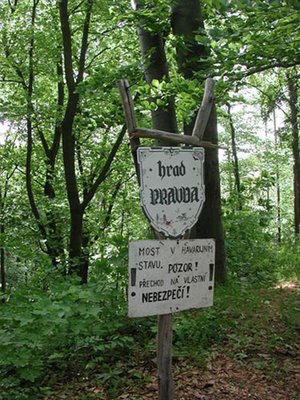 When I visit Rakovník, the schedule of events generally involves 1) tea or coffee with baked goods and conversation; 2) lunch with additional conversation; and 3) some sort of afternoon outing. Though the weather was chilly and threatened to be rainy, by afternoon it was such that we felt able to embark on a hike to a nearby ruined castle. (Well, first we had to drive to where we could reasonably begin our hike.) The said castle was uphill through a forest, but the path was not steep and none of us got at all out of breath, unless possibly the dog Agip, who is a bit elderly.
When I visit Rakovník, the schedule of events generally involves 1) tea or coffee with baked goods and conversation; 2) lunch with additional conversation; and 3) some sort of afternoon outing. Though the weather was chilly and threatened to be rainy, by afternoon it was such that we felt able to embark on a hike to a nearby ruined castle. (Well, first we had to drive to where we could reasonably begin our hike.) The said castle was uphill through a forest, but the path was not steep and none of us got at all out of breath, unless possibly the dog Agip, who is a bit elderly.I did not expect the castle to be called Pravda, but I suppose its medieval owners had no notion that this name would later be appropriated for a Communist publication.
While the sign warns that one crosses the bridge at one's own risk, the said bridge was made of poles and appeared perfectly safe to me, not like some sort of rope bridge over a chasm.
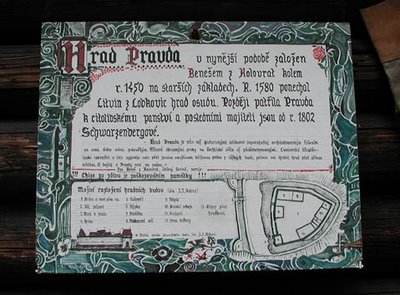 Once we entered the gate, we found a wooden building with an informative sign.
Once we entered the gate, we found a wooden building with an informative sign. Other than that, the interior of the former castle was pretty much wild, but very agreeable. I gather that it is even more attractive in the fall.
Other than that, the interior of the former castle was pretty much wild, but very agreeable. I gather that it is even more attractive in the fall.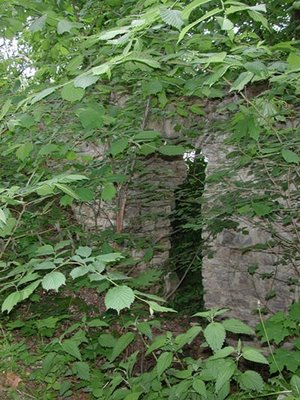 We examined the ruins at some length and then turned around and went back. Somewhere in the neighborhood there are also menhirs, but we didn't have time to find them this time around. We did, however, take a look at the Devil's Stone from the car, which I failed to photograph. Allegedly it is geologically unlike anything nearby, although it looked like a normal enough hunk of weathered sedimentary rock to me. I suppose the Devil had a hand in carving it as well as in transporting it to a field. It was certainly not like the rock used in the castle or in local houses.
We examined the ruins at some length and then turned around and went back. Somewhere in the neighborhood there are also menhirs, but we didn't have time to find them this time around. We did, however, take a look at the Devil's Stone from the car, which I failed to photograph. Allegedly it is geologically unlike anything nearby, although it looked like a normal enough hunk of weathered sedimentary rock to me. I suppose the Devil had a hand in carving it as well as in transporting it to a field. It was certainly not like the rock used in the castle or in local houses.And that's all I have to say about that.
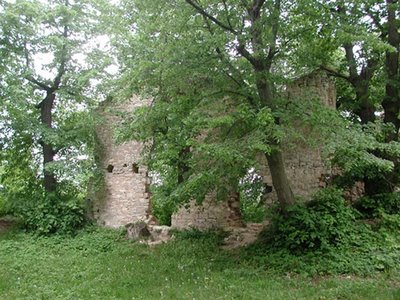
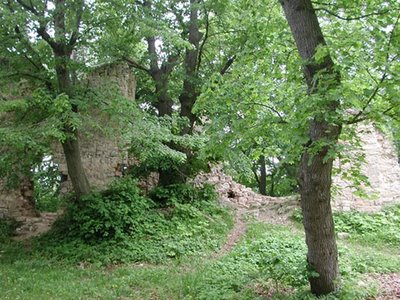

0 Comments:
Post a Comment
<< Home